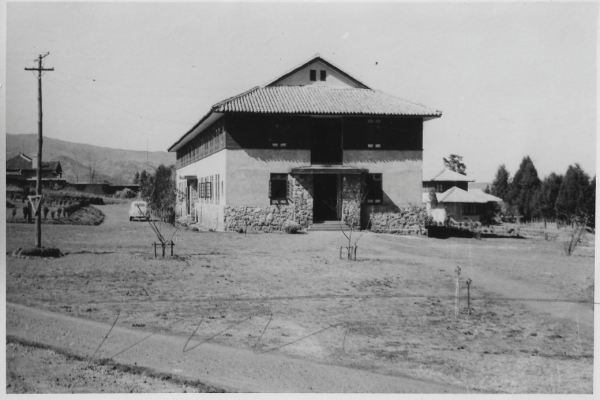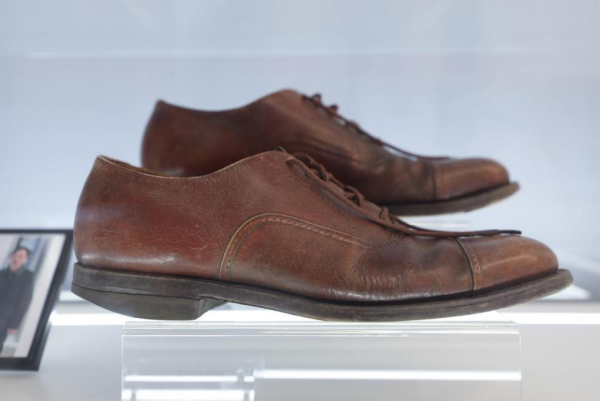The advent of penicillin marked a new era in chemotherapy. China’s experimental production of penicillin began on September 5, 1945, in Gaoyao Village, Kunming, the capital city of Southwest China’s Yunnan Province, and home to the Central Office of Epidemic Prevention, the country’s first institution for epidemiological and bacteriological research and biological product manufacturing.
The office, the predecessor of China National Biotec Group Company Limited (CNBG) under China National Pharmaceutical Group Co., Ltd. (Sinopharm), a central state-owned enterprise, was relocated to Yunnan in 1939, when the Japanese forces invaded China and the whole nation was amid the war of resistance against the Japanese aggression.
During that turbulent period, China faced immense challenges, not only from the ongoing warfare but also from the urgent need for medical advancements to support its war efforts and public health.
Under the leadership of the scientist Tang Feifan, the Central Office of Epidemic Prevention, consisting more than 20 staff members, managed to rebuild the facilities from scratch in the challenging conditions in Yunnan, embarking on a remarkable journey to produce essential serums and vaccines. Their perseverance led to significant achievements in microbiological research, placing China at the forefront of certain scientific fields.
Among the pioneering scientists were also Wei Xi, Zhu Jiming, Huang Youwei, Lu Jinhan, and Fan Qingsheng. With keen insight into the latest developments in medical research, they promptly initiated efforts to develop penicillin.

A historic photo of the Central Office of Epidemic Prevention, taken in August 1944 [Photo/sasac.gov.cn]
In 1942, Tang and Lu discovered and isolated penicillin strains from a pair of moldy shoes, marking the beginning of China's antibiotics endeavors. The historic shoes are now preserved at the CNBG.
Inspired by the traditional process of making fermented tofu in Yunnan, the team collected samples from shoes, old clothes, fruits, ancient coins, and other potential sources of mold. This meticulous work required immense patience and precision. After hundreds of trials from the winter of 1941 to the spring of 1944, the team successfully identified 11 antibiotic-producing strains from over 40 Aspergillus penicillioides molds, with the strains isolated by Lu and Tang from meat residue and shoes being particularly outstanding.

In 1942, Tang and Lu discovered and isolated penicillin strains from a pair of moldy shoes. [Photo/sasac.gov.cn]
On September 5, 1944, through ingenuity and resilience, the scientists overcame numerous technical challenges in what was essentially a DIY field lab. China’s independently-produced penicillin was born. The initial production yielded only five bottles, each containing 5,000 units. Two bottles were sent to Chongqing, the wartime capital in Southwest China, and two were sent to the United Kingdom and the United States for evaluation, receiving high praise. The remaining bottle has been preserved to this day.
The precious domestically-produced penicillin was soon sent for clinical trials. At Huidian Hospital, Dr. Yao Hanping administered it to several terminally-ill patients suffering from post-surgical sepsis. The results were astounding: all patients recovered fully. Subsequent trials at Kunhua Hospital further confirmed its remarkable efficacy.
At that time, penicillin was extremely valuable, with reports suggesting that "some were willing to trade an ounce of gold for a vial." Yet, the Central Office of Epidemic Prevention maintained a policy of selling it at the low price to patients in need, even offering discounts or free treatment to impoverished patients, embodying the principle of science serving the people.
Although large-scale industrial production of penicillin was not achieved during the war, the Central Office of Epidemic Prevention supplied significant quantities of cholera vaccines and tetanus serum to both military and civilian populations, playing a crucial role in supporting the nation's war efforts.
Records indicate that between January and June 1940 alone, the office produced 4.17 million milliliters of cholera vaccine and 3.03 million milliliters of tetanus serum. These products not only supported the domestic war effort but were also supplied to allied forces fighting the Japanese aggressors in Southeast Asia and the Pacific, contributing significantly to the defeat of fascism and earning international acclaim for China's public health initiatives.
After the founding of the People's Republic of China in 1949, Tang Feifan, Tong Cun, and other distinguished scientists continued their work at the newly renamed Central Biological Products Institute. Their efforts marked a new beginning for the independent and self-reliant development of China's biological products industry.
(Executive editor: Yuan Ting)